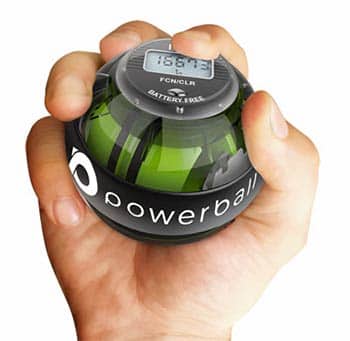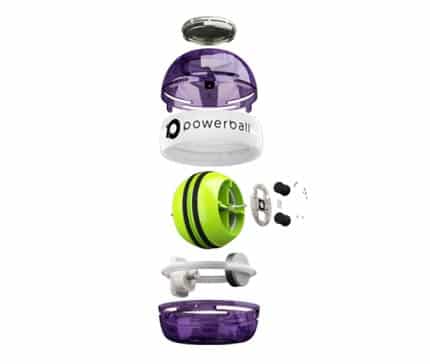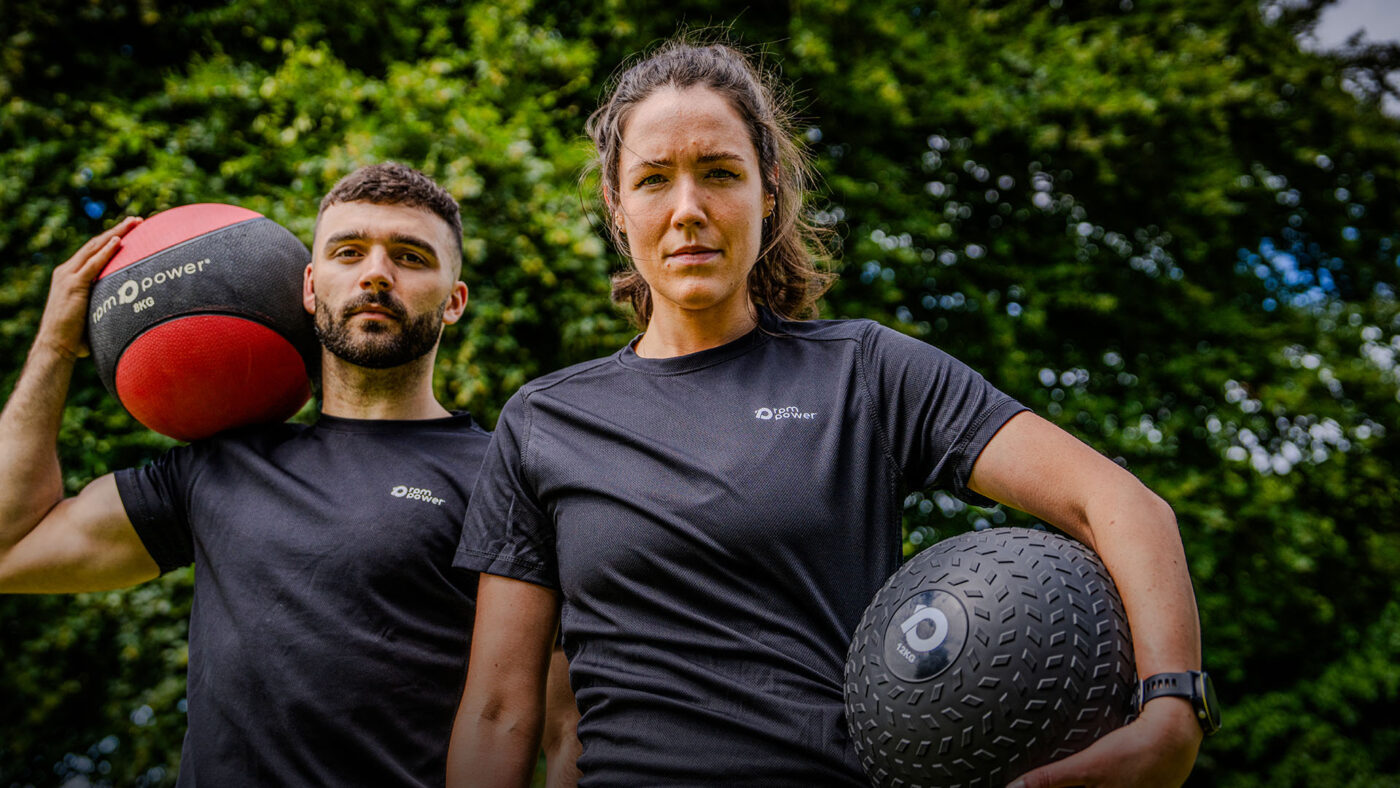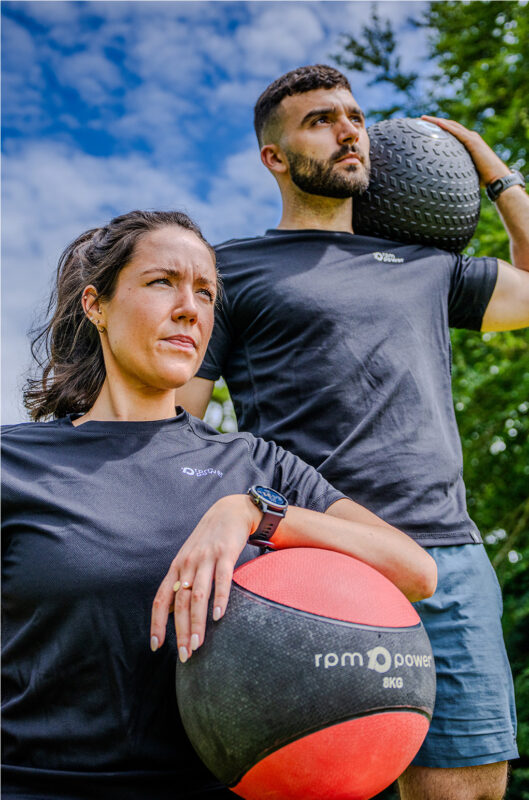Uncategorized
De Quervain’s Tenosynovitis Exercises with Powerball
De Quervain’s Tenosynovitis
Effective De Quervain’s tenosynovitis exercises and how to treat the condition
De Quervain’s tenosynovitis is a painful condition that affects the tendons connecting the thumb to the wrist. De Quervain’s tenosynovitis can develop for many reasons and if left untreated, it can start to affect other areas of the arm, including your thumb and forearm. Powerball is a highly-effective rehabilitation and strengthening device that works to combat and treat De Quervain’s tenosynovitis at its source. Instantly relieve pain and soothe and repair inflammation caused by this condition simply by spinning Powerball. Kick start your healing process today by supplementing De Quervain’s tenosynovitis exercises with Powerball and get back to enjoying a healthy and pain-free lifestyle once more.
https://www.youtube.com/watch?v=qsuYila31qsWhat is De Quervain’s tenosynovitis?
De Quervain’s tenosynovitis occurs when the tendons running between the thumb and the wrist become irritated and inflamed. These inflamed tendons then rub against the narrow tunnel that surrounds them, causing pain where the thumb meets the wrist. The swollen tendons can also put pressure on surrounding nerves, which may further aggravate the pain. De Quervain’s tenosynovitis may occur suddenly or develop gradually. In either case, you may find it difficult or painful to move your thumb or wrist, particularly when you try to make a grasping or pinching movement.
Symptoms of De Quervain’s tenosynovitis
The symptoms De Quervain’s tenosynovitis include:
- Swelling or inflammation near the base of your thumb
- Difficulty making a fist
- Difficulty when making grasping/pinching movements
- Pain where the thumb meets the wrist
- Reduced grip strength
- Hearing or feeling a ‘sticking’ or ‘creaking’ as your tendons move

Causes of De Quervain’s tenosynovitis
Although the exact cause of De Quervain’s tenosynovitis is still relatively unknown, any activity or repetitive wrist movements will likely make it worse. Constant overuse of the tendons in the wrist will cause them to become irritated and later, inflamed. Even simple movements, such as typing, using a computer mouse, gardening, driving or repetitive work tasks, when repeated day in, day out, are enough to bring on this condition. Hobbies that require a strong grip and lots of repetitive movements, such as racket sports, can also cause De Quervain’s tenosynovitis. The condition has even been nicknamed “Gamer’s Thumb”, due to the fact that it also affects many video game players. But it’s not just repetitive actions that can irritate your tendons, a sudden harsh impact caused by injury can also cause this painful condition.
While anyone can get De Quervain’s tenosynovitis, it is 8 to 10 times more likely to occur in women than men, particularly women with young children. This could be linked with the repeated pressure applied to your wrist and thumb as you lift up your child. It is important to treat this condition accurately and with care, and therefore it is recommended that you seek professional advice before trying out various De Quervain’s tenosynovitis exercises or other treatment methods.

Treatment & De Quervain’s tenosynovitis exercises
The goal when treating De Quervain’s tenosynovitis is to cure any inflammation and pain in the wrist and prevent the condition from reoccurring again in the future. While surgery is an option for treating De Quervain’s tenosynovitis, it is only ever recommended as a last resort. Before it comes to that, there are a couple of other treatment options available to you:
Powerball for De Quervain’s tenosynovitis
Powerball is a revolutionary device for rehabilitation and is highly-effective in the treatment of De Quervain’s tenosynovitis. At the size of a tennis ball, Powerball fits securely and comfortably in your hand. Very little grip strength is required to spin Powerball at slow speeds, so you can use this product even if you cannot fully grasp the ball due to pain in the wrist or thumb. What’s more, it takes very little effort to start Powerball. If you are a first-time user of Powerball, we recommend starting off with one of our Autostart models. To start Autostart Powerball, simply wind the rotor back a couple of turns and release. This is quite easy to do, however, if you are experiencing severe pain in your thumb/wrist, you can also roll Powerball across a flat table to get it started. See here for more information on how to start your Powerball or watch the video below.
https://www.youtube.com/watch?v=iWUYX_Vtl-cBoost circulation
As you spin Powerball, it generates a unique form of isometric resistance. This resistance runs along the entire kinetic chain of your arm, working deep into the tissue of sore muscles and tendons. The wrist movements required to spin Powerball, even at slow speeds massively increase circulation throughout the entire upper body.
This increase in circulation carries oxygen-rich nutrients to inflamed tendons in the wrist, where they immediately soothe pain and start to repair any damaged or swollen tissue. There is nothing (absolutely nothing) that will bring relief and recovery from De Quervain’s tenosynovitis faster than an increase in circulation will. Damaged and inflamed tendons of the thumb and wrist sit at the root of this debilitating condition and by boosting blood flow to this area, Powerball quickly and efficiently begins to relieve the symptoms of De Quervain’s tenosynovitis.

Non-impact De Quervain’s tenosynovitis exercises
Isometric resistance is 100% non-impact, meaning it doesn’t place any strain on sore or inflamed tendons. Instead, spinning Powerball soothes and relieves pain from inflammation, rehabilitating and rejuvenating tendons fast and effectively for long-term treatment results.
Strengthen as you recover
At the start of your recovery, it is important to spin Powerball at slow and gentle spin speeds. A low level of resistance will act quickly to relieve pain, ease inflammation and repair tendon tissue. Spin Powerball for as little as 3 minutes a day and start to see the incredible results within only a short period of time. As you start to feel the symptoms of De Quervain’s tenosynovitis fade, you can gradually increase your Powerball spin speed. As you do, Powerball’s isometric resistance will begin to strengthen weak tendons as they rehabilitate. Continue to take your recovery one day at a time and steadily build your spin speed until you have fully recovered.
Even with a world-class rehabilitation device like Powerball in your hand, the recovery process will still take some time. While Powerball is proven to reduce rehabilitation times, it is important to take your treatment slow and never over-exert yourself. Spinning Powerball at higher speeds or doing any De Quervain’s tenosynovitis exercises before your body is ready, may slow down your recovery or worsen your condition.
Long term prevention with Powerball
We highly recommend that you continue to use Powerball even after the recovery period is over. By not maintaining tendon and muscle strength, you risk De Quervain’s tenosynovitis reoccurring, particularly if you continue to repeat the actions which may have caused it to develop in the first place. Regular strength training with Powerball will ensure that your muscles and tendons remain strong and supple long after you have recovered from your injury. Using Powerball for just 5 minutes each day maintains joint health and muscle shape, which will actively prevent the reoccurrence of injury. Get back to a healthy and pain-free lifestyle with Powerball.

Other recommended treatment for De Quervain’s tenosynovitis
- Medications – Over-the-counter pain killers, such as ibuprofen, can help to relieve the swelling.
- De Quervain’s tenosynovitis exercises and stretches – Your physical therapist will most likely recommend certain exercises to help you regain strength in your wrist and thumb. Combine Powerball with De Quervain’s tenosynovitis exercises to strengthen while you rehabilitate and help speed recovery times.
- Ice – Ice packs are great to help reduce inflammation. It is extremely important to rest the wrist with ice if swelling and extreme pain are present.
- Wear a splint – Your physical therapist might recommend wearing a splint to help you avoid moving your wrist and thumb for a couple of weeks.
- Take a break – Resting from the causes of De Quervain’s tenosynovitis, such as impact sports and repetitive movements (e.g. typing, using a computer mouse, driving, etc.) will speed up recovery times and reduce the risk of worsening the injury or allowing it to reoccur.
- Steroid injections – Your doctor may recommend getting steroid injections or using a local anaesthetic to numb the pain. These injections can often be very beneficial if you are in the early stages of your condition.
- Surgery – Your doctor may recommend surgery to help you to recover from De Quervain’s tenosynovitis. In most cases, it will take longer to recover from surgery and it should only ever be considered as a last resort and after you have tried other, less severe methods of rehabilitation.

Post-surgery rehabilitation
Should you decide to undergo surgery in order to treat your De Quervain’s tenosynovitis, it is important to be aware of the rest and recovery time needed after your procedure. After surgery, the tendons and muscles in your wrist will be weak. Exercise with Powerball will help to strengthen your wrists from the beginning of your recovery period right up to the end and beyond. Start at slow spin speeds and as you gain your strength back, gradually increase the spin speed. Regular strength training with Powerball keeps your muscles and tendons in top shape, while also maintaining joint health, so you need not worry about your De Quervain’s tenosynovitis returning again.
What does the physical therapist recommend?
Colm Murphy is an IAPT physical therapist, lecturer in anatomy, and professional tennis coach. Colm is an expert in rehabilitation, musculoskeletal anatomy and analysis and works closely with elite level athletes. Colm designed our rehabilitation & strengthening programmes, which you can find on our videos page.
https://www.youtube.com/watch?v=yhL9zvj4mZM VideosPowerball Gyroscope – How it works
With over 4 million sold worldwide, Powerball is the world’s number one gyroscope. Inside the shell of a Powerball is a rotor (green wheel), which spins on an axis. As the rotor spins, it creates resistance, which pushes against your efforts to spin Powerball. The faster you spin Powerball, the more resistance it creates and the harder it becomes to spin. This resistance is non-impact and 100% isometric, making it perfect for rehabilitation and strengthening.

Cure and prevent De Quervain’s tenosynovitis today, simply by spinning Powerball. Check out our online store to see the range of models available and choose the right one for you.
Experience Power® in the palm of your hand with Powerball.
STORE
DE QUERVAINS TENOSYNIVITIS
CAUSING WEAKNESS & PAIN FOR YOUR DRUMMING?
PROBLEM SOLVED.
“I’m a drummer who was suffering with De Quervains Tenosynivitis. Since I started using Powerball®, I have found that my symptoms have dramatically improved. Not only has it been a huge help to me when playing the drums, but in every day situations at work, I notice a huge difference in the way my wrists feel.
While drumming before I started using Powerball® my wrists would feel tired and give me a numb/pins & needles sensation from my wrist to the end of my thumb, leading me to believe I might drop my drumsticks. Since I started warming up with Powerball® before I practice, however, all tiredness and tingling have disappeared. I’m so happy I purchased this product.”
Emily Jacklin, Lincolnshire, UK




